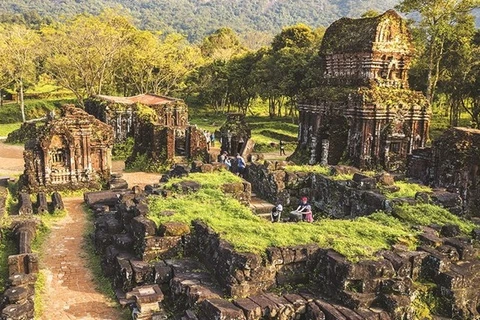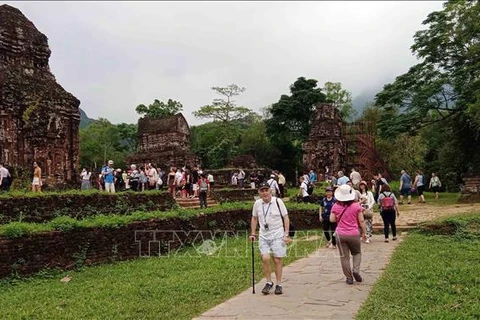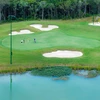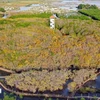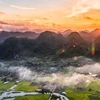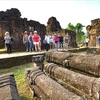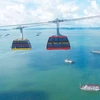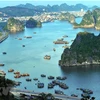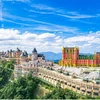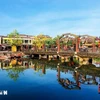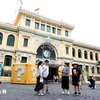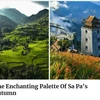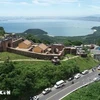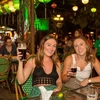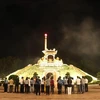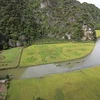Quang Nam (VNA) – From now to 2030, the Management Board of My Son World Cultural Heritage Site will develop new tourism products in buffer and core zones of the site.
The board will focus on relaxation and and eco-tourism products on an area of 1,158ha of forest in the buffer zone, surrounding Thach Ban lake.
The connectivity between the relic and other heritage sites in the central region and major tourism hubs will also be strengthene. In particular, the board will strive to improve personnel quality, especially tour guides, and diversify services at the sanctuary.
Once the religious and political capital of the Champa Kingdom, My Son Sanctuary is located in a hilly landscape in Duy Phu commune, Duy Xuyen district, about 70 km southwest of central Da Nang city and 40 km from Hoi An city.
It comprises eight groups of 71 monuments built throughout the 7th to 13th century. Having their spiritual origin from Hinduism of the Indian sub-continent, My Son temples were built to worship the Hindu divinities such as Krishna and Vishnu, but above all Shiva.
The first construction of My Son dated back to the 4th century under the reign of Bhadravarman for the worship of God Shiva-Bhadresvara. But later on, the temple was destroyed.
At the beginning of the 7th century, King Sambhuvarman had it rebuilt. Each new monarch came to My Son after his accession to the throne for the ceremony of purification and to present offerings and erect new monuments, which explains why My Son was the only place where Cham art flourished without interruption from the 7th to 13th century.
 The Management Board of My Son World Cultural Heritage Site has implemented new services and tourism products to attract more tourists (Photo: VietnamPlus)
The Management Board of My Son World Cultural Heritage Site has implemented new services and tourism products to attract more tourists (Photo: VietnamPlus) The monuments of the My Son sanctuary are the most important constructions of the My Son civilization. The tower temples have a variety of architectural designs symbolizing the greatness and purity of Mount Meru, the mythical sacred mountain home of Hindu gods at the center of the universe, now symbolically reproduced on Earth in the mountainous homeland of the Cham people. They are constructed in fired brick with stone pillars and decorated with sandstone bas-reliefs depicting scenes from Hindu mythology. Their technological sophistication is evidence of Cham engineering skills while the elaborate iconography and symbolism of the tower-temples give insight into the content and evolution of Cham religious and political thought.
The My Son Sanctuary is a remarkable architectural ensemble that developed over a period of ten centuries. It presents a vivid picture of spiritual and political life in an important phase of the history of South-East Asia.
According to the UNESCO, conservation of the My Son monuments began in the early part of the 20th century soon after their discovery in modern times by French archaeologists. As a result of wars, many tower-temples were damaged. However, preservation work has been carried out and the remaining tower-temples have been maintained and are well-preserved.
Phan Ho, Director of the Management Board of My Son World Cultural Heritage Site, said since the sanctuary won the UNESCO recognition in 1999, many organisations and individuals, both at home and abroad, have joined hands in the preservation. Among them there are the UN Educational, Scientific and Cultural Organisation (UNESCO), JICA (Japan), Lerici Foundation (Italy), the University of Milan, and the Archaeological Survey of India (ASI).
The locality will also step up the application of scientific-technological advances in the conservation work, and continue strictly enforcing regulations on state management, as well as the World Heritage Convention and the Cultural Heritage Law./.


